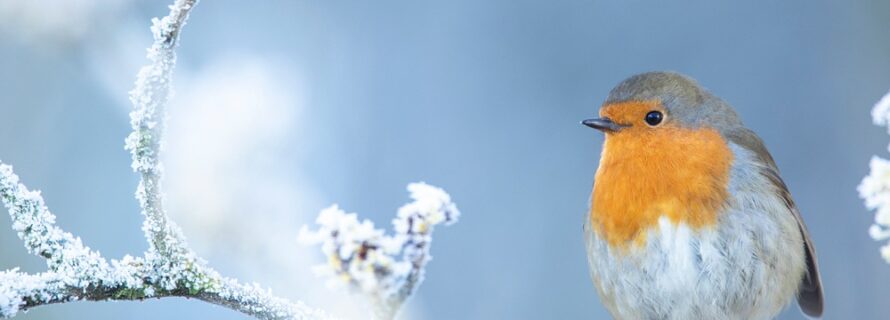After weeks of unseasonably mild weather the winter chill is finally arriving. Encouraged by a blast of freezing wind from Eastern Europe – not quite the Beast from the East – temperatures in the UK have fallen dramatically and we have seen rain, sleet and even some snow fall.
Temperatures dropping to freezing
Having enjoyed above average temperatures so far this Autumn, it’s forecast that the next few weeks will be 2 or 3 degrees below average for the time of year with frost increasingly likely. So, in anticipation of seeing our gardens and roads covered in a thin white frost covering we thought it would be interesting to look at how it forms and the different types of frost that exists.
Conditions when frost forms
Frost is normally formed on still, clear and cold nights – like the ones we are currently having. The cool air that sits above the ground causes water vapour in the air to condense and form droplets on the ground. When the temperature of the ground or surface is below 0°C the moisture freezes into ice crystals. This is known as the frost point.
But if you thought that frost was just frost, well here’s a quick guide to the different kinds of frost we experience.
Air frost
This occurs when the air temperature falls to or below the freezing point of water. An air frost is usually defined as the air temperature being below freezing point of water at a height of at least one metre above the ground.
Ground frost
This is the formation of ice on the ground, objects or trees, where the surface has a temperature below the freezing point of water. When the ground cools quicker than the air, a ground frost can occur without an air frost (see below).
Hoar frost
This type of frost is composed of tiny ice crystals and is formed by the same process as dew, but when the temperature of the surface is below freezing point. The ‘feathery’ variety of hoar frost forms when the surface temperature reaches freezing point before dew begins to form on it.
White frost
Formed in a similar way to Hoar frost, white frost is made up of more globular ice and occurs when dew forms first and then subsequently freezes.
Glaze and rime
Glaze forms usually forms when super-cooled rain or drizzle comes into contact with the ground. It appears as a clear ice deposit that can be mistaken for a wet surface and can be highly dangerous for pedestrians and drivers alike.
Rime is a rough white ice deposit which forms on vertical surfaces exposed to the wind. It is created by super-cooled water droplets of fog freezing on contact with a surface as it drifts past.
It’s easy to organise your winter gritting and snow clearance
With the onset of these frosty conditions at your premises, now is the time to get your ice gritting and snow clearance arrangements in hand. Simply call Ice Watch today on 01728 633900 for a quote tailored to your site’s specific requirements.






